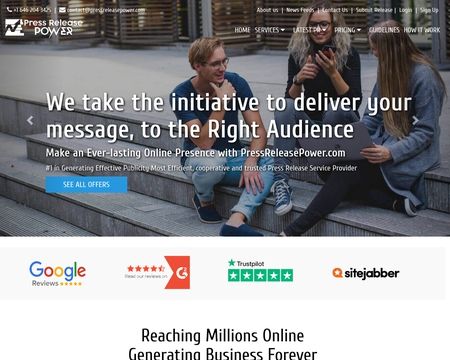Launching a product-led SEO strategy involves aligning your product development with your SEO goals to drive organic traffic, conversions, and long-term growth. Unlike traditional SEO strategies that focus on content creation and link building, a product-led approach integrates SEO directly into the product experience, making the product itself the key driver of search visibility and customer acquisition.
This blog will provide a detailed guide on launching a successful product-led SEO strategy, covering the following key points:
- Understanding Product-Led SEO
- Benefits of a Product-Led SEO Strategy
- Key Steps to Launch a Product-Led SEO Strategy
- Common Mistakes to Avoid
- FAQs About Product-Led SEO Strategies
Understanding Product-Led SEO
What is Product-Led SEO?
Product-Led SEO (PLS) is an approach where your product becomes the primary vehicle for driving organic search traffic. Unlike conventional SEO strategies that prioritize content marketing and link-building to rank higher on search engines, PLS integrates SEO within the product itself. This could involve optimizing product features, user experience, and user-generated content to increase search visibility.
For instance, if you have a software product, you can optimize your features, landing pages, and onboarding processes for specific keywords that potential users search for. This creates a seamless experience where the user finds value directly in your product, leading to higher engagement, retention, and conversions.
Benefits of a Product-Led SEO Strategy
Adopting a product-led SEO strategy offers several advantages:
Long-Term Organic Growth
Product-led SEO strategies are not just about quick wins; they focus on sustainable, long-term growth. By building SEO directly into your product, you create a continuous loop of organic traffic generation.
Higher User Engagement and Retention
When users find value in your product's features through search engines, it directly leads to higher user engagement and retention. Since the product delivers on the search intent, users are more likely to stay, engage, and convert.
Reduced Customer Acquisition Costs (CAC)
Traditional SEO often involves significant expenses in content creation, link building, and paid advertisements. Product-led SEO, however, focuses on optimizing your existing product to drive organic traffic, which can reduce your overall marketing costs.
Better Alignment Between Product and Marketing Teams
Product-led SEO encourages collaboration between product, marketing, and development teams. It creates a unified approach where all teams work toward a common goal: making the product itself a growth engine.
Scalability
Once set up, a product-led SEO strategy can scale more efficiently than traditional methods. You are not solely dependent on external content or backlinks; the product’s own growth and improvements can contribute to increased SEO performance.
Key Steps to Launch a Product-Led SEO Strategy
To successfully launch a product-led SEO strategy, follow these crucial steps:
Conduct In-Depth Market and Keyword Research
Begin by understanding your target audience, competitors, and market trends. Use SEO tools like Ahrefs, SEMrush, or Moz to identify high-value keywords related to your product features. The goal is to find keywords that align with both user intent and the value proposition of your product.
Identify SEO Opportunities Within Your Product
Determine how your product can directly solve user problems related to the identified keywords. For example, if your product is a project management tool, you could optimize for keywords like "best project management tool for remote teams" or "how to organize projects effectively."
Optimize Core Product Features for SEO
Integrate SEO optimization directly into your product features. This includes:
- Onboarding Processes: Create keyword-optimized onboarding content that helps users get started.
- In-Product Microcopy: Use keywords naturally within product descriptions, tooltips, and tutorials.
- Product Documentation and Help Centers: Optimize for long-tail keywords that address user queries.
Create SEO-Focused Product Landing Pages
Develop dedicated landing pages for each feature or use case that your product offers. These pages should be keyword-optimized, informative, and conversion-oriented. Highlight the unique selling points (USPs) of your product that match user search intent.
Leverage User-Generated Content (UGC)
Encourage users to generate content, such as reviews, testimonials, or forum discussions, that can help enhance SEO. User-generated content is often keyword-rich and can provide valuable backlinks and social proof for search engines.
Implement a Robust Internal Linking Strategy
Use internal linking to guide users and search engines through your product and website. Ensure all key pages, such as feature descriptions and product demos, are interconnected with relevant anchor texts that align with your keyword strategy.
Monitor and Analyze SEO Performance
Use tools like Google Analytics, Search Console, and specialized SEO tools to track the performance of your product-led SEO strategy. Monitor key metrics like organic traffic, bounce rates, conversions, and user engagement. Regular analysis helps in identifying gaps and areas for improvement.
Iterate and Optimize Continuously
SEO is not a one-time activity but a continuous process. Keep iterating and optimizing your product and its SEO aspects based on the insights gained from data analysis. Conduct A/B testing to identify what changes lead to better results.
Common Mistakes to Avoid in a Product-Led SEO Strategy
While a product-led SEO strategy can be highly effective, there are common pitfalls that companies must avoid:
Ignoring the User Intent
A significant mistake is to focus solely on keywords without considering user intent. Ensure that every piece of content or product feature optimization addresses a specific user need or query.
Neglecting Technical SEO
Even with a great product, poor technical SEO (site speed, mobile optimization, crawlability) can hinder your efforts. Make sure that your product and website adhere to SEO best practices.
Overlooking Collaboration Between Teams
Product-led SEO requires collaboration across multiple teams. Lack of communication between product, development, and marketing teams can lead to disjointed efforts and missed opportunities.
Not Focusing on User Experience (UX)
Product-led SEO is heavily dependent on providing a great user experience. Ensure your product is easy to use, intuitive, and meets user expectations.
Failing to Update Regularly
SEO and product landscapes change frequently. Not keeping your product and SEO strategy up to date can lead to a loss of competitiveness.
FAQs About Product-Led SEO Strategies
Q1: What is the difference between traditional SEO and product-led SEO?
Traditional SEO focuses on creating external content (blogs, articles) and acquiring backlinks to improve search engine rankings. Product-led SEO, on the other hand, integrates SEO directly into the product, making the product itself the primary driver for organic growth.
Q2: Can a product-led SEO strategy work for all types of products?
While a product-led SEO strategy is more commonly associated with SaaS and digital products, it can be adapted to other types of products by focusing on product features, user-generated content, and SEO-focused landing pages.
Q3: How can user-generated content help in a product-led SEO strategy?
User-generated content such as reviews, testimonials, and forum discussions is often rich in keywords and can provide valuable backlinks. It also adds social proof and enhances the overall SEO performance by providing fresh, unique content.
Q4: How long does it take to see results from a product-led SEO strategy?
SEO strategies typically take time to show results, and a product-led approach is no different. It may take 3-6 months to see significant improvements in organic traffic and conversions, depending on the competitiveness of your market and the effectiveness of your strategy.
Q5: What tools are essential for implementing a product-led SEO strategy?
Tools like Ahrefs, SEMrush, Google Analytics, and Google Search Console are essential for keyword research, performance monitoring, and competitive analysis. Additionally, tools like Hotjar or Crazy Egg can help analyze user behavior and identify optimization opportunities within the product.
Q6: How important is technical SEO in a product-led strategy?
Technical SEO is crucial in a product-led strategy. Without a solid technical foundation (like fast loading times, mobile optimization, and proper indexing), even the best product optimizations may not yield the desired results.
Q7: How do you prioritize SEO opportunities within the product?
Prioritize SEO opportunities based on potential impact, feasibility, and alignment with business goals. Conduct a SWOT analysis to identify which optimizations will offer the highest ROI and focus on those first.
Q8: Can a product-led SEO strategy work in a highly competitive market?
Yes, a product-led SEO strategy can work in competitive markets by focusing on niche keywords, user experience, and unique product features that differentiate your product from competitors.
A product-led SEO strategy is an innovative approach that aligns your SEO goals with your product development to drive sustainable growth. By focusing on delivering value through the product itself, optimizing for user intent, and continuously refining your strategy, you can create a powerful engine for organic traffic, user engagement, and business success.
By understanding and implementing these steps, your company can transform its SEO approach and achieve more with less by making your product the star of your growth strategy.
Get in Touch
Website – https://www.webinfomatrix.com
Mobile - +91 9212306116
Whatsapp – https://call.whatsapp.com/voice/9rqVJyqSNMhpdFkKPZGYK
j Skype – shalabh.mishra
Telegram – shalabhmishra
Email - info@webinfomatrix.com

.jpg)
.jpg)






 English (US) ·
English (US) ·